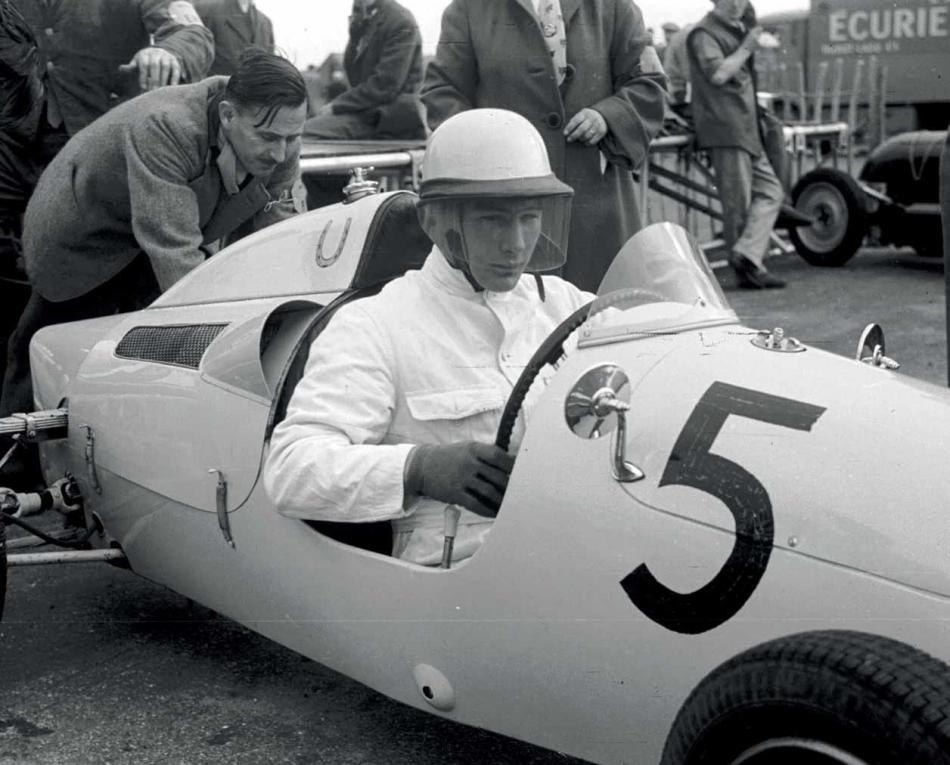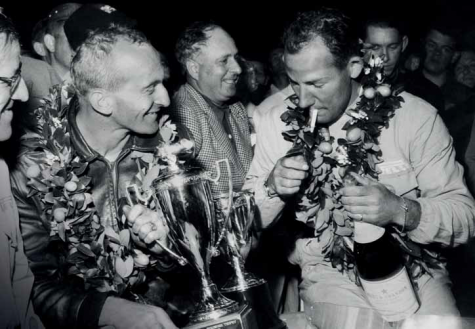From Auto#12: Memories of Moss

Formula One Calling
27 May, 1951: Swiss Grand Prix, Bremgarten, Berne
In 1950, based on his good showings in the 500cc class, Moss joined Britain’s HWM team and toured a series of F2 and non-championship F1 races. Moss’s Formula One World Championship debut would come at the following year’s Swiss Grand Prix, the season opener in the absence of Monaco. “[Bremgarten] was a great circuit but the HWM was terribly outclassed. We had about 120hp, running on alcohol. I think the regulations were for 1500cc cars with a supercharger or 4.5 litres normally aspirated and we only had 2 litres. “I was up against guys like [Luigi] Villoresi, [Alberto] Ascari, [Giuseppe ‘Nino’] Farina, those kind of guys. To me, they were gods. I was only something like 19 or 20 years old and to race on a circuit like that was very, very difficult. You had the Alfas and things like that, which were so fast we obviously couldn’t get close, but it gave me an enormous amount of experience. “What was very good at that race was that on the first practice day it was wet and I qualified up with the really fast cars, so that did me a lot of good. It was another big stepping stone for me.”

The American Way
7 March, 1954: Stirling Moss/Bill Lloyd, 1st position, Sebring, Florida, USA
“This was my first time in the States. [US entrepreneur, racer and team owner] Briggs Cunningham called me up and asked if I would I like to drive for him. “I really wanted to go to America because in those days you could buy anything there. You wouldn’t know the war had been on, so I could buy coloured nylons for my girlfriend, all the stuff you couldn’t get in England. “I’m with [co-driver] Bill Lloyd in this picture. We had a 1300-1400cc Osca and won the race outright in bad conditions. It was amazing how that little Osca kept going. It had very poor brakes… Brilliant, because you could drive it so well, you could put it sideways to slow it up and everything.” “The thing is in America, it was almost a dirty word to be a professional racing driver. Gentlemen had their Ferraris and it was considered slightly vulgar to race for money – these guys were racing for cups, trophies. It was completely the opposite to what you might think American racing would have been like. Americans would say, ‘What do you do for a living?’ and I almost didn’t dare say I was a racing driver because to them it conjured up images of Sprint Car drivers. “There actually weren’t that many drivers. You had people like [Kleenex heir] Jim Kimberley and all these people who had these cars, but there weren’t many of them. There were some really good ones – Phil [Hill] and Dan Gurney for example – but there weren’t really many Americans up to the standard we had in Europe and it made it great fun to drive there.”

The Joy of Racing
20 May, 1962: Zandvoort
Moss’s career would come to a shuddering halt in 1962 when on the 23rd of April, Easter Monday, he was involved in a horrific crash at Goodwood. Driving a Lotus in the Formula One Glover Trophy, Moss crashed at over 100 mph while not wearing a seatbelt. Rescuers spent some 45 minutes freeing him from the wreckage of the car. He spent the next month in a coma and with the left-hand side of his body partially paralysed for six more. It was a year before he tried a comeback but in a private test session, also at Goodwood, he discovered that, while he could still produce the lap times, his concentration had gone and he announced his retirement. Moss has said in the past that his loss of concentration meant it was necessary to end his racing career. Now, he is not sure.
“My biggest mistake, in my opinion, thinking back with the benefit of hindsight, was that if I had waited one more year, I think I could have gone back to it.
“I think the pressure in the press, ‘When are you going to race? Will you be driving the best car? How are you going to take the…?’ I was getting all of this all the time and I had to make a decision. I think I was forced to say, ‘I will do it or I won’t’, and I decided. “If I’d delayed that decision one more year, I think I could have returned to racing, which is really a bore because at 32 years of age I had to work for a living! I’d had this wonderful life and now I suddenly couldn’t do it. “It’s a nice picture. I’d grown a beard and I kept it until somebody said I looked like an ageing Rabbi. “I think this shows the enjoyment I had in racing. Driving fast isn’t fun, but being quicker than other people is and that’s what one had to do. You had to say, ‘Right, I’ve got to beat them,’ and that is the challenge and that picture, to me, is of a man who picked up that idea and just ran with it.”


 Facebook
Facebook Twitter
Twitter






